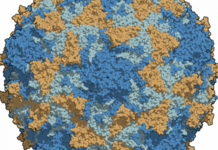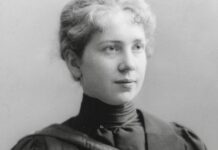On December 3, 1993, Lewis Thomas passed away at the New York Hospital in Manhattan. Thomas strived to tell the stories and mysteries of biology to a broad audience.
It is not a simple life to be a single cell, although I have no right to say so, having been a single cell so long ago myself that I have no memory at all of that stage in my life.
A Long Line of Cells : Collected Essays (1990)
The Scientist and the Bunnies
Lewis Thomas became a well-known scientist with the discovery of the floppy-ear bunny around 1955. Thomas studied papain, an enzyme commonly found on papaya plants, in rabbits at the New York University, when he noticed something odd. The bunnies that received a papain injection shared a particular feature. Their ears went completely floppy after 18 hours, only to become erect again three to four days later. Thomas later understood that papain directly attacked the cartilage matrix. The discovery led to the identification of proteins involved in diseases such as rheumatoid arthritis.
As an immunologist, Thomas also made crucial discoveries on neutrophils’ role in mediating fever and shock caused by bacterial toxins. He also made essential advancements, together with H. Sherwood Lawrence and John David, to understand cytokines — small molecules that signal and mediate immunity and inflammation.
Lewis Thomas, the writer
As a literary author, Lewis Thomas’s career took off in the ’70s, with a bi-monthly series called “Notes of a Biology Watcher.” Between 1971 and 1973, Thomas published 29 essays in this collection, that would later become a critically acclaimed book, The Lives of a Cell. It won the U.S National Book Award in 1975 and it was included in the “100 or so Books that Shaped a Century of Science” by the American Scientist.
Besides The Lives of a Cell, Thomas wrote The Medusa and the Snail, which won another National Book Award in 1981, and The Youngest Science: Notes of a Medicine-Watcher, published in 1983, amongst others.
Short Bio
Lewis Thomas was born in Queens on November 25, 1913. He began his medical education in Princeton in 1929, the year the Great Depression hardly hit the U.S. There, he grew more interested in literature than in physics and chemistry. Only in his senior year, and after a course with Professor Wilbur Swingle, he took an interest in biology.
Getting into Harvard was, by his words, a mix of “luck and pull.” His bacteriology professor Hans Zinsser and his parents had become close friends in recent years. After an internship at Boston City Hospital — “the best of times,” according to him — he served in the Naval Research Unit at the Hospital of the Rockefeller Institute during the Second World War.
Later, he held several administrative positions and began publishing his literary and scientific work until his death at the age of 80 from cancer in the lymph system.
Image Credit: National Book Award website.
Sources:
https://www.nationalbook.org/books/the-medusa-and-the-snail/





